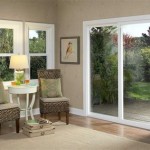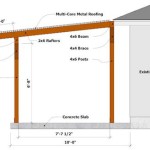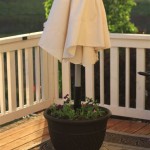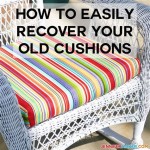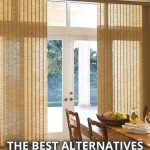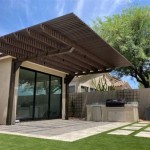Curtains to Cover Patio Doors in Winter Season
Patio doors, while offering aesthetic appeal and natural light, can become significant sources of heat loss during the winter season. The large glass surfaces conduct heat readily, allowing warmth to escape from the interior of a building and cold air to penetrate. Consequently, selecting appropriate curtains for patio doors in winter is crucial for energy efficiency, comfort, and overall cost savings. This article examines the factors to consider when choosing curtains for patio doors during the colder months, focusing on material, insulation properties, style, and installation considerations.
Understanding Heat Transfer and the Role of Curtains
Heat transfer occurs through three primary mechanisms: conduction, convection, and radiation. Patio doors, primarily constructed of glass, excel at conducting heat. The temperature difference between the interior and exterior environments drives heat flow from the warmer to the colder area. Without adequate insulation, the heat loss through patio doors can significantly impact heating bills and indoor comfort levels. Curtains act as a barrier, reducing heat transfer through these mechanisms.
Dense, tightly woven fabrics impede conductive heat loss. Multiple layers of fabric further enhance this effect by creating air pockets that trap heat. The trapped air acts as an additional insulating layer, slowing down the rate at which heat can transfer through the curtain material. Furthermore, curtains can also mitigate convection by reducing drafts around the patio door area. By blocking airflow, they prevent cold air from circulating into the room and warm air from escaping.
Radiation is another significant factor in heat loss, especially through glass surfaces. Sunlight entering through the patio door can heat the interior during the day, but this heat is quickly radiated back out at night. Insulated curtains with a reflective backing can reduce radiant heat loss by reflecting infrared radiation back into the room, effectively retaining heat and minimizing energy consumption.
Key Material Properties for Winter Curtains
The material composition of curtains plays a pivotal role in their ability to insulate and reduce heat loss. Several materials are particularly well-suited for winter applications due to their inherent properties.
Wool: Wool is a natural fiber known for its excellent insulating capabilities. Its inherent crimp creates air pockets that trap heat, making it a highly effective barrier against cold. Wool curtains are durable, resistant to wrinkles, and offer a luxurious appearance. However, wool can be expensive and may require professional cleaning.
Fleece: Fleece is a synthetic alternative to wool that provides similar insulating properties at a lower cost. It is soft, lightweight, and easy to care for, making it a practical choice for winter curtains. However, fleece may not be as aesthetically pleasing as wool and may attract more dust.
Velvet: Velvet is a dense, plush fabric with a high pile that provides excellent insulation. Its thick weave traps air, creating a barrier against heat loss. Velvet curtains are also effective at blocking light, making them a good choice for bedrooms or media rooms. However, velvet can be heavy and may require specialized hardware for hanging.
Thermal Fabrics: Thermal fabrics are specifically designed for insulation. They typically consist of multiple layers of fabric bonded together, often including a layer of insulating foam or a reflective backing. Thermal curtains are highly effective at reducing heat loss and can significantly improve energy efficiency. These curtains are often available in a variety of styles and colors, offering versatility in design.
Lining Fabrics: Even if the primary curtain fabric is not inherently insulating, adding a thermal lining can significantly improve its performance. Thermal linings are typically made of acrylic suede or other insulating materials and can be attached to the back of existing curtains. This provides an affordable way to upgrade the insulation of existing window coverings.
Style, Design, and Installation Considerations
Beyond material selection, the style and design of curtains, along with proper installation techniques, contribute significantly to their effectiveness in reducing heat loss. The choice of style should complement the existing decor while maximizing insulation performance.
Length and Width: Curtains should be long enough to reach the floor or even slightly puddle on the floor. This prevents cold air from entering through the gap between the curtain and the floor. The width of the curtains should be at least twice the width of the patio door to ensure adequate fullness and prevent gaps when the curtains are closed. Fuller curtains create more air pockets, enhancing their insulating properties.
Header Style: The header style, which refers to the way the curtains are attached to the rod, can also impact insulation. Grommet-top curtains, while stylish, can allow more air to escape through the grommets. Pleated headers, such as pinch pleat or goblet pleat, provide a more secure fit and minimize air leakage. Rod pocket curtains can also offer good insulation if they are hung close to the rod.
Layering: Layering curtains is an effective way to enhance insulation. Combining a sheer curtain with a heavier, insulated curtain allows for flexible light control and enhanced thermal performance. During the day, the sheer curtain can filter light while still providing some insulation. At night, the heavier curtain can be closed to maximize heat retention.
Hardware: The choice of hardware is also important. Using a curtain rod that wraps around the sides of the patio door frame, known as a wraparound rod, can further prevent drafts. This type of rod eliminates gaps between the curtain and the wall, creating a more effective barrier against cold air. Ensure the rod is sturdy enough to support the weight of the curtains, especially if they are made of heavy materials like velvet or wool.
Sealing Gaps: Even with the best curtains, gaps around the patio door frame can allow cold air to enter. Sealing these gaps with weather stripping or caulk can further improve energy efficiency. Check the perimeter of the door frame for any cracks or openings and seal them to prevent drafts.
Automated Systems: Consider incorporating automated curtain systems that can be programmed to open and close at specific times. This allows for maximizing solar gain during the day and minimizing heat loss at night. Automated systems can be easily integrated with smart home technology for enhanced convenience and energy management.
Professional Installation: While some curtain installations can be performed as a DIY project, complex installations or those involving heavy fabrics may benefit from professional assistance. Professional installers have the expertise and tools to ensure that the curtains are properly hung and that all gaps are sealed. This can help maximize the insulation benefits of the curtains.
Maintaining winter curtains is also important for maximizing their effectiveness. Regular vacuuming can remove dust and debris that can accumulate in the fabric, reducing its insulating properties. Curtains made of delicate materials may require professional cleaning to avoid damage. Proper care and maintenance will extend the lifespan of the curtains and ensure that they continue to provide effective insulation for years to come.
In summary, selecting and installing appropriate curtains for patio doors during the winter season involves careful consideration of material properties, style, design, and installation techniques. By choosing dense, insulating fabrics, ensuring adequate coverage, and sealing gaps around the door frame, homeowners can significantly reduce heat loss, improve energy efficiency, and enhance indoor comfort levels. The initial investment in quality curtains and proper installation will be offset by reduced energy bills and a warmer, more comfortable living environment throughout the winter months.

8 Best Sliding Glass Door Curtain Ideas The Shade

8 Best Sliding Glass Door Curtain Ideas The Shade

Patio Glass Door Curtains Ideas Photos Tips Spiffy Spools

10 Patio Door Curtain Ideas You Ll Love

8 Best Sliding Glass Door Curtain Ideas The Shade

Patio Door Curtain Ideas For Diffe Needs And Tastes

Patio Glass Door Curtains Ideas Photos Tips Spiffy Spools

8 Best Sliding Glass Door Curtain Ideas The Shade

10 Patio Door Curtain Ideas You Ll Love

8 Best Sliding Glass Door Curtain Ideas The Shade

